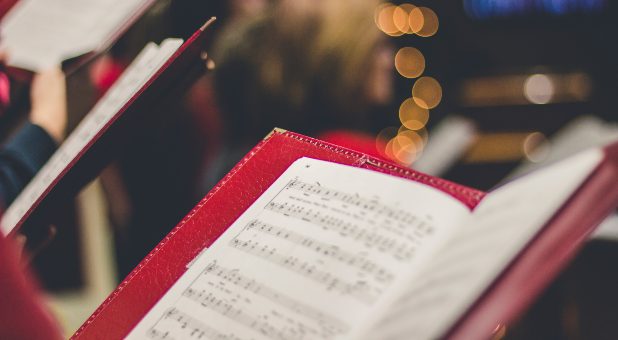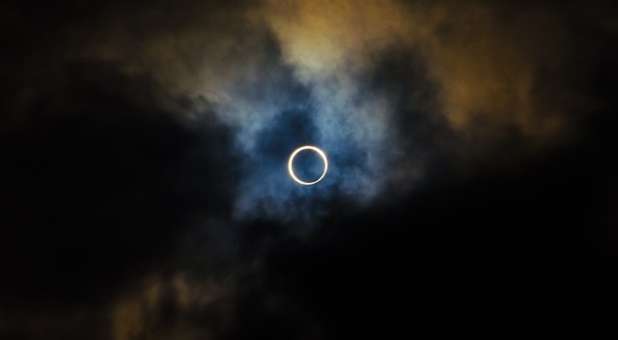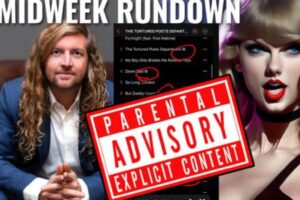“O Holy Night” is known as one of the most beautiful and spiritually moving Christmas songs ever written. Many around the world would say the gorgeous ballad claims a top spot in the ranking of most beloved songs of the season. And it’s for good reason—the lyrics are profound and its composition gives way for artists to play with every long and lofty note.
What you may not know is the fascinating (and I mean mind-blowingly fascinating) history of the song that makes it all the more remarkable.
Here are seven facts about the wild history of “O Holy Night.”
- It was written as a poem by a non-church-going French wine seller.
In 1847 Placide Cappeau de Roquemaure was a wine commissionaire and local poet in a small French town and was the unlikely choice to pen a song for the church. The parish priest approached Cappeau to commission him to write a poem for Christmas mass.
Cappeau was brought up Catholic but often drifted away from religion and rarely attended Mass. Furthermore, he would express criticism of the Roman Catholic church but was relatively harmless given his abysmal reach in the town. Shocked but honored by this unexpected request from the parish priest, Cappeau sought the guidance of the Gospel of Luke for inspiration.
He wanted to imagine what it would have been like to witness the birth of Jesus in Bethlehem to anchor the piece. Once the poem titled “Cantique de Noel” (meaning Song of Christmas) was complete, Cappeau felt so moved by his own work he insisted it become a song, as noted on Beliefnet.
- It was composed by a famous Jewish musician who didn’t believe in the words of the song.
Cappeau sought help from legendary classical musician and personal friend, Adolphe Charles Adam. Adam, famous for his musical work, felt immensely challenged by the request to compose a song for lyrics in which he did not believe. Despite the challenge, he put his skills to use to compose the score of the tune we know today in just three short weeks. It is believed that Cappeau did not reveal Adam’s religious views to the priest to avoid controversy.
The parish priest of Cappeau’s town was beyond thrilled with the finished product and performed the song less than a month later at midnight mass on Christmas Eve with the help of a parisian opera singer as noted on Ireland Down.
- Just as the song became wildly popular in France, it was banned by the church for scandal.
The beautiful melody and lyrics of “Cantique de Noel” quickly spread throughout Catholic churches in France. However, while the song was gaining notoriety, Cappeau had effectively renounced the church for allegiance to the socialist movement. In addition, the composer Adam’s contrasting beliefs were also unearthed to church leaders bringing controversy around the beloved song to a head.
The leaders of the French Catholic church decidedly denounced the song that was gaining explosive reach across the country. As quoted in Beliefnet, they stated the Christmas tune was a “total absence of the spirit of religion” forcing it out of church services.
- Although the church rejected it, the French people kept the song alive underground.
For nearly two decades, the French people sang “Cantique de Noel” despite the church’s aggressive decree prohibiting it. They sang it in their homes and any private spaces outside the church. The public found the meaningful lyrics and beautiful harmonies too compelling to ignore.
This strange form of “rebellion” lead it into the hands of American writer John Sullivan Dwight, who overheard the song on a trip to France.
- The still-forbidden French Christmas song became the anthem for the American abolitionist movement.
Dwight was a writer and a well-known American abolitionist. After overhearing the famous Christmas song “unfit for the church” he stopped and stewed over its powerful lyrics. Most especially these lines:
Dwight felt emboldened and inspired by the lyrics as they aligned with his views against slavery. The song’s profound imagery of breaking chains so reflected the heart of the abolitionist movement, he knew it would resonate with fellow supporters in America. Dwight quickly moved to translate the song in English to “O Holy Night” and published it in his magazine. The zine was distributed throughout America at the height of the Civil War.
Almost instantly, “O Holy Night” was embraced by American audiences most especially in the North—the heart of the abolitionist movement.
- The song stopped war for a night.
On Christmas Eve 1871 during the Franco-Prussian War, some historians recount a French soldier running into the fray and belting out the opening lyrics to “Cantique de Noel.” A German soldier responded with a line from another Christmas tune, “From Heaven Above to Earth I Come.” They say the men honored a day-long peace treaty in observation of Christmas. The song continued to inspire ripple effects.
- It was the first song to be broadcast on radio waves.
Fast-forward to Christmas Eve in 1906. Reginald Fessenden, a university professor and chemist under Thomas Edison, was busy at work on an unforeseen discovery—radio waves. He created a generator and was successful in being the first voice on the airwaves.
In the spirit of the holiday, Fessenden playing with his successful broadcast decided to read the nativity story from the Gospel of Luke aloud to the “audience.” After he concluded, he decided to play none other than “O Holy Night” on his violin. Little did he understand the unfolding marvel and wonder from ship radio operators and wireless radio owners who were now hearing the song play on their once-independent radios and speakers. This became the first song to ever play on airwaves.
Today, we haven’t forgotten the power of this incredible song. “O Holy Night” has touched millions of lives around the globe. What began as a poem written by a wine seller, composed by a Jewish man and banned by the church, came to serve as the anthem of the abolitionist movement in its powerful revelation of the evils of slavery. It was then the first song to play across airwaves and continues to tearfully touch people every Christmas season.
Who would have thought one of the most heartbreakingly beautiful and spiritual songs ever written would have such a fascinating legacy. {eoa}
LightWorkers’ mission is to create engaging, uplifting and inspirational content that breaks through the clutter, building a community of sharing and igniting a movement in the real world that motivates people to celebrate and share the good all around them. Visit lightworkers.com.
See an error in this article?
To contact us or to submit an article






















